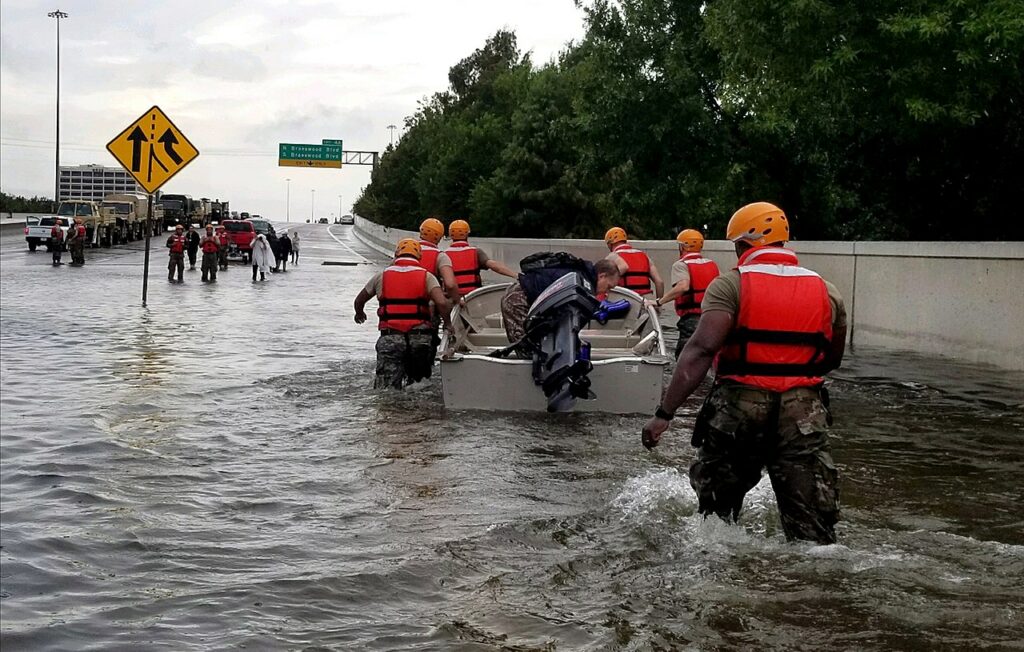
(Scypre.com) – Central Texas is reeling from catastrophic flash flooding that has claimed more than 100 lives, with five young campers and a counselor from the historic Camp Mystic still missing. The flooding, which began late on July 3 and intensified into the early hours of July 4, was caused by remnants of Tropical Storm Barry combined with tropical moisture from the Pacific. Within hours, the Guadalupe River surged over 26 feet, overwhelming communities in Kerr County and surrounding areas. Emergency crews and residents were caught off guard by the speed and intensity of the rising water, which devastated homes, businesses, and roadways.
As of July 8, authorities have confirmed at least 105 fatalities across the state. Kerr County alone has reported up to 100 deaths, with over two dozen children among the victims. The tragedy is especially acute at Camp Mystic, a century-old Christian girls’ summer retreat near Hunt, Texas. The camp was full when the river overtopped its banks. Twenty-seven campers and counselors have been confirmed dead. Five girls and one counselor remain missing, sparking an intense recovery effort involving helicopters, airboats, sonar drones, and K-9 teams. Many of the victims’ families have traveled to the camp from Dallas, Austin, and across Texas, hoping for any news.
Volunteer organizations such as Mercy Chefs and Team Rubicon have deployed to support search efforts and feed first responders and families. Among the heroes are camp counselors who tried to guide children to safety, as well as rescue specialists like Coast Guard swimmer Scott Ruskan. One of the victims, 8-year-old twin sisters Hanna and Rebecca Lawrence, drowned while their older sister survived. Their story, like so many others, has touched hearts across the country. Community members describe the tragedy as unimaginable but have also highlighted the unity and compassion on display during the response.
State and federal officials have mobilized emergency resources. Texas Governor Greg Abbott declared a state of disaster in the affected counties and pledged ongoing support. President Trump approved a federal disaster declaration for Kerr County and is expected to visit the area later this week. The damage is estimated in the billions, and lawmakers are under renewed pressure to invest in flood mitigation infrastructure. Kerr County, despite being part of one of the most flood-prone regions in the U.S., had no county-wide siren system or high-water alert technology in place when the flood hit. Officials acknowledged that while the National Weather Service issued flash flood warnings hours in advance, the lack of local warning systems hindered timely evacuations.
The rescue mission has now largely shifted into a recovery operation. Authorities believe search teams will remain along the Guadalupe River for at least two more weeks. The terrain is treacherous, with miles of muddy banks and debris-filled water complicating efforts. While the rain has subsided, forecasters caution that any additional precipitation over already saturated ground could trigger further flooding. Meanwhile, families and volunteers remain at the river’s edge, praying for the safe return of the missing. Residents, rescue workers, and officials alike have described the past few days as both heartbreaking and heroic.
This disaster has raised urgent questions about preparedness and accountability in flood-prone regions. In the coming weeks, Texas legislators are expected to review emergency infrastructure proposals that had previously stalled in budget negotiations. For now, the focus remains on recovery and honoring the lives lost. As one volunteer, Mariann Elizondo, put it: “It’s beautiful to see everyone come together to help for a very devastating situation.” The tragedy at Camp Mystic and across Central Texas has shaken the state—but in the face of unimaginable loss, communities are holding fast to hope, faith, and each other.